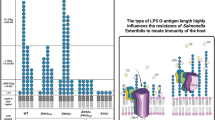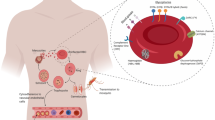Abstract
Major histocompatibility complex class II antigens are important in vertebrate immune system. In the present study, the full cDNA sequence of class II A gene was synthesized by RACE-PCR from half-smooth tongue sole (Cynoglossus semilaevis), and its open reading frame (ORF) polymorphism was studied. The whole cDNA sequence was 992 bp in length, including the ORF with 717 bp. Twenty-five alleles were identified and clustered into two distinct groups according to the specific nucleotides/ amino acids in specific positions. Eleven alleles belonged to Cyse-DAA while fourteen alleles belonged to Cyse-DBA. Four Cyse-DAA alleles were observed in one individual, and three to five Cyse-DBA alleles were observed in each of the three detected individuals, which indicated that at least two loci existed in each gene. Moreover, in order to study the function of the alleles in resistance to infection, 200 individuals were intraperitoneally injected with Vibrio anguillarum and the first 20 dead individuals and 20 surviving ones were selected for genotype analysis. Fifty-six alleles were identified among the 40 individuals. Twenty-nine alleles belonged to Cyse-DAA and the other 27 alleles belonged to Cyse-DBA. Eighteen alleles were selected for studying their function in resistance to infection. Alleles Cyse-DAA*0201, Cyse-DAA*1101, Cyse-DBA*0401, Cyse-DBA*1102, Cyse-DBA*1801 and Cyse-DBA*2201 were identified only in surviving individuals, while alleles Cyse-DAA*0901, Cyse-DBA*1101 and Cyse-DBA*1401 occurred more frequently in dead individuals. This study confirmed the existence and polymorphism of two class II A genes as well as the relationship between alleles of class II A genes and disease susceptibility/ resistance in half-smooth tongue sole.
Similar content being viewed by others
References
Conejeros, P., Phan, A., Power, M., Alekseyev, S., O’Connell, M., and Dempson, B., 2008. MH class II alpha polymorphism in local and global adaptation of Arctic charr (Salvelinus alpinus L.). Immunogenetics, 60: 325–337.
Consuegra, S., Megens, H. J., Leon, K., Stet, R. J. M., and Jordan, W. C., 2005. Patterns of variability at the major histocompatibility class II alpha locus in Atlantic salmon contrast with those at the class I locus. Immunogenetics, 57: 16–24.
Cosson, P., and Bonifacino, J. S., 1992. Role of transmembrane domain interactions in the assembly of class II MHC molecules. Science, 258: 659–662.
Cuesta, A., Esteban, M. A., and Meseguer, J., 2006. Cloning, distribution and up-regulation of the teleost fish MHC class II alpha suggests a role for granulocytes as antigen-presenting cells. Molecular Immunology, 43: 1275–1285.
Davies, C. J., Andersson, L., Ellis, S. A., Hensen, E. J., Lewin, H. A., and Mikko S, 1997. Nomenclature for factors of the BoLA system, 1996: report of the ISAG BoLA Nomenclature Committee. Animal Genetics, 28: 159–168.
Dixon, B., and Stet, R. J. 2001. The relationship between major histocompatibility receptors and innate immunity in teleost fish. Development and Comparative Immunology, 25: 683–699.
Flajnik, M. F., and Kasahara, M. 2001. Comparative genomics of the MHC: glimpses into the evolution of the adaptive immune system. Immunity, 15: 351–362.
Godwin, U. B., Flores, M., Quiniou, S., Wilson, M. R., Miller, N. W., and Clem, L. W., 2000. MHC class II A genes in the channel catfish (Ictalurus punctatus). Developmental and Comparative Immunology, 24: 609–622.
Grimholt, U., Getahun, A., Hermsen, T., and Stet, R. J. M., 2000. The major histocompatibility class II alpha chain in salmonid fishes. Developmental and Comparative Immunology, 24: 751–763.
Hardee, J. J., Godwin, U., Benedetto, R., and McConnell, T. J., Major histocompatibility complex class II A gene polymorphism in the striped bass. Immunogenetics, 1995, 41: 229–238.
Harstad H., Lukacs M. F., Bakke H. G., and Grimholt U., 2008. Multiple expressed MHC class II loci in salmonids; details of one non-classical region in Atlantic salmon (Salmo salar). BMC Genomics, 9: 193.
Hofmann, K., and Stoffel, W., 1993. TMbase — A database of membrane spanning proteins segments. Biological Chemistry Hoppe-Seyler, 374: 166.
Hughes, A. L, and Nei, M., 1989. Nucleotide substitution atmajor histocompatibility complex class II loci: evidence for overdominant selection. Proceedings of the National Academy of Sciences, USA, 86: 958–962.
Kjøglum, S., Larsen, S., Bakke, H. G., and Grimholt, U., 2006. How specific MHC class I and class II combinations affect disease resistance against infectious salmon anaemia in Atlantic salmon (Salmo salar). Fish & Shellfish Immunology, 21: 431–441.
Kjøglum, S., Larsen, S., Bakke, H. G., and Grimholt, U., 2007. The Effect of Specific MHC Class I and Class II Combinations on Resistance to Furunculosis in Atlantic Salmon (Salmo salar). Scandinavian Journal of Immunology, 67: 160–168.
Klein, J., and Figueroa, F., 1986. Evolution of the major histocompatibility complex. Critical Reviews in Immunology, 6: 295.
Kruiswijk, C. P., Hermsen, T., Fujiki, K., Dixon, B., Savelkoul, H. F., and Stet, R. J., 2004. Analysis of genomic and expressed major histocompatibility class Ia and class II genes in a hexaploid Lake Tana African ‘large’ barb individual (Barbus intermedius). Immunogenetics, 55: 770–781.
Kumar, S., Tamura, K., and Nei, M., 2004. MEGA3: integrated software for molecular evolutionary genetics analysis and sequence alignment. Briefings in Bioinformatics, 5: 150–163.
Li, C., Yu, Y., Sun, Y., Li, S., Zhong, Q., and Wang, X., 2010. Isolation, polymorphism and expression study of two distinct major histocompatibility complex class II B genes from half-smooth tongue sole (Cynoglossus semilaevis). International Journal of Immunogenetics, 37: 185–197.
Murray, B. W., Shintani, S., Sültmann, H., and Klein, J., 2000. Major histocompatibility complex class II A genes in cichlid fishes: identification, expression, linkage relationships, and haplotype variation. Immunogenetics, 7: 576–586.
Nielsen, H., Engelbrecht, J., Brunak, S., and von, H. G., 1997. A neural network method for identification of prokaryotic and eukaryotic signal peptides and prediction of their cleavage sites. International Journal of Neural Systems, 8: 581–599.
Quiniou, S. M. A., Wilson, M., Bengten, E., Waldbieser, G. C., Clem, L. W., and Miller, N. W., 2005. Miller MHC RFLP analyses in channel catfish full-sibling families: identification of the role of MHC molecules in spontaneous allogeneic cytotoxic responses. Developmental and Comparative Immunology, 29: 457–467.
Parham, P., and Ohta, T., 1996, Population biology of antigen presentation by MHC class I molecules. Science, 272: 67–74.
Reusch, T. B., Schaschl, H., and Wegner, K. M., 2004. Recent duplication and inter-locus gene conversion in major histocompatibility class II genes in a teleost, the three-spined stickleback. Immunogenetics, 56: 427–437.
Rost, B., 1996. PHD: predicting one-dimensional protein structure by profile-based neural networks. Methods in Enzymology, 266: 525–539.
Rozas, J., and Rozas, R., 1997. DnaSP version 2.0: a novel software package for extensive molecular population genetic analysis. Computer Application in the Biosciences, 13: 307–311.
Rothbard, J. B., and Gefter, M. L., 1991. Interactions between immunogenic peptides and MHC proteins. Annual Review of Immunology, 9: 527–565.
Saitou, N., and Nei, M., 1987. The neighbor-joining method: a new method for reconstructing phylogenetic trees. Molecular Biology and Evolution, 4: 406–425.
Stet, R. J., de Vries, B., Mudde, K., Hermsen, T., van Heerwaarden, J., and Shum, B. P., 2002. Unique haplotypes of co-segregating major histocompatibility class II A and class II B alleles in Atlantic salmon (Salmo salar) give rise to diverse class II genotypes. Immunogenetics, 54: 320–331.
Sultmann, H., Mayer, W. E., Figueroa, F., O’hUigin, C., and Klein, J., 1993. Zebrafish Mhc class II α chain-encoding genes:polymorphism, expression, and function. Immunogenetics, 38: 408–420.
Takahata, N., and Nei, M., 1990. Allelic genealogy under overdominant and frequency dependent selection and polymorphism of major histocompatibility complex loci. Genetics, 124: 967–978.
van Erp, S. H., Egberts, E., and Stet, R. J., 1996. Characterization of class II A and B genes in a gynogenetic carp clone. Immunogenetics, 44: 192–202.
Wang, Y., Han, Y., Chen, J., and Zhang, X., 2007. Isolation of Photobacterium damselae subsp. piscicida from diseased tongue sole (Cynoglossus semilaevis Gunther) in China. Acta Microbiologica. Sinica., 47: 763–768.
Xu, T., and Chen, S., 2009. Genomic structure of DAA gene and polymorphism within MHC. DAA alleles in Japanese flounder (Paralichthys olivaceus). Hereditas, 31: 1020–1028.
Xu, T. J, Chen, S. L, and Zhang, Y.X., 2010. MHC class II alpha gene polymorphism and its association with resistance/susceptibility to Vibrio anguillarum in Japanese flounder (Paralichthys olivaceus). Develomental and Comparative Immunology, 34: 1042–1050.
Yu, S., Ao, J., and Chen, X., 2009. Molecular characterization and expression analysis of MHC class II α and β genes in large yellow croaker (Pseudosciaena crocea). Molecular Biology Reports, DOI: 10.1007/s11033-009-9504-8.
Zhang, Y., and Chen, S., 2007. Full length cDNA cloning and tissue expression of major histocompatibility complex (MHC) II A from turbot Scophthalmus Maximus. Oceanologia Et Limnologia Sinica, 38: 221–226.
Author information
Authors and Affiliations
Corresponding author
Rights and permissions
About this article
Cite this article
Li, C., Wang, X., Zhang, Q. et al. Identification of two major histocompatibility (MH) class II A genes and their association to Vibrio anguillarum infection in half-smooth tongue sole (Cynoglossus semilaevis). J. Ocean Univ. China 11, 32–44 (2012). https://doi.org/10.1007/s11802-012-1802-4
Received:
Revised:
Accepted:
Published:
Issue Date:
DOI: https://doi.org/10.1007/s11802-012-1802-4




